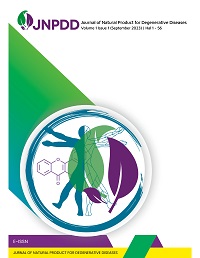Antioxidant Activity Cultivated of Soursop (Annona muricata L.) Leaves Extract in Jayasari Village, Pangandaran District, West Java
DOI:
https://doi.org/10.58511/jnpdd.v1i1.5317Keywords:
phytochemistry, A. muricata, soursop, flavonoid, antioxidantAbstract
Indonesia is a source of raw materials for tropical medicines that treat various diseases. One of the places to plant soursop leaves in West Java is Jayasari Village, Pangandaran District. Annona muricata Linn (Soursop) leaves is a medicinal plant widely used as an anti-diabetic, anti-inflammatory, insecticide, antimalarial, anticancer, antibacterial, and antioxidant. Soursop leaves have many benefits because they contain phytochemical compounds. This study aims to determine the phytochemical content, total flavonoid content, and antioxidant activity of A. muricata leaves. This research was carried out in several steps, including extraction, evaporation, phytochemical testing, total flavonoid content, and antioxidant activity. Phytochemicals were extracted with 96% ethanol by maceration. Measurement of flavonoids in extracts was determined using standard quercetin and UV-Vis spectrophotometry method. Antioxidant activity was carried out through a 2,2-diphenyl-1-picrylhydrazyl (DPPH) radical removal test. The results showed that the ethanol extract of soursop leaves contained alkaloids, flavonoids, phenolics, saponins, and tannins. The results of measurements of flavonoids from the ethanol extract of soursop leaves showed that 1 g of the extract contained 8.32 mg of quercetin equivalent. The ethanol extract of soursop leaves has antioxidant activity, as indicated by the scavenging of DPPH radicals with an IC50 of 56.73 ppm.










